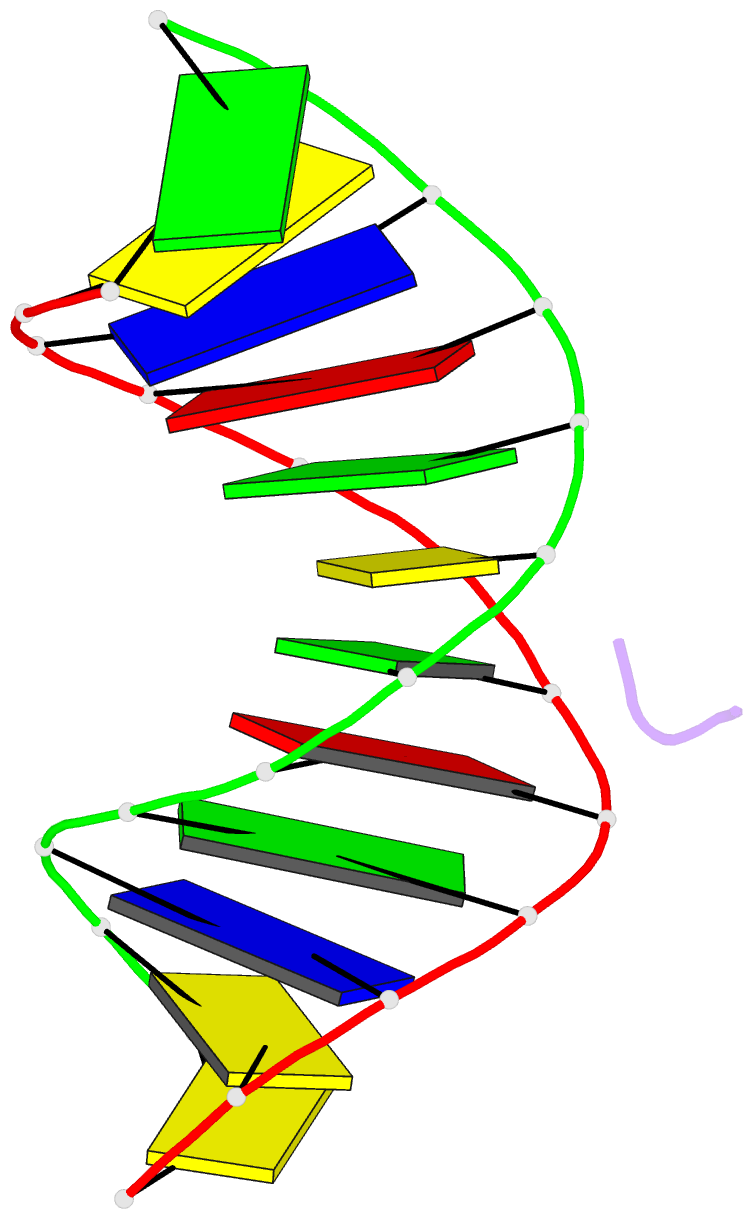Summary information and primary citation
- PDB-id
- 2kv6; SNAP-derived features in text and JSON formats;
DNAproDB
- Class
- DNA binding protein-DNA
- Method
- NMR
- Summary
- Tetrapeptide kwkk conjugated to oligonucleotide duplex by a trimethylene tether
- Reference
- Huang H, Kozekov ID, Kozekova A, Rizzo CJ, McCullough AK, Lloyd RS, Stone MP (2010): "Minor Groove Orientation of the KWKK Peptide Tethered via the N-Terminal Amine to the Acrolein-Derived 1,N(2)-gamma-Hydroxypropanodeoxyguanosine Lesion with a Trimethylene Linkage ." Biochemistry, 49, 6155-6164. doi: 10.1021/bi100364f.
- Abstract
- DNA-protein conjugates are potentially repaired via proteolytic digestion to DNA-peptide conjugates. The latter have been modeled with the amino-terminal lysine of the peptide KWKK conjugated via a trimethylene linkage to the N(2)-dG amine positioned in 5'-d(GCTAGCXAGTCC)-3'.5'-d(GGACTCGCTAGC)-3' (X = N(2)-dG-trimethylene link-KWKK). This linkage is a surrogate for the reversible linkage formed by the gamma-OH-1,N(2)-propanodeoxyguanosine (gamma-OH-PdG) adduct. This conjugated KWKK stabilizes the DNA. Amino acids K(26), W(27), K(28), and K(29) are in the minor groove. The W(27) indolyl group does not intercalate into the DNA. The G(7) N(2) amine and the K(26) N-terminal amine nitrogens are in the trans configuration with respect to the C(alpha) or C(gamma) of the trimethylene tether, respectively. The structure of this DNA-KWKK conjugate is discussed in the context of its biological processing.





